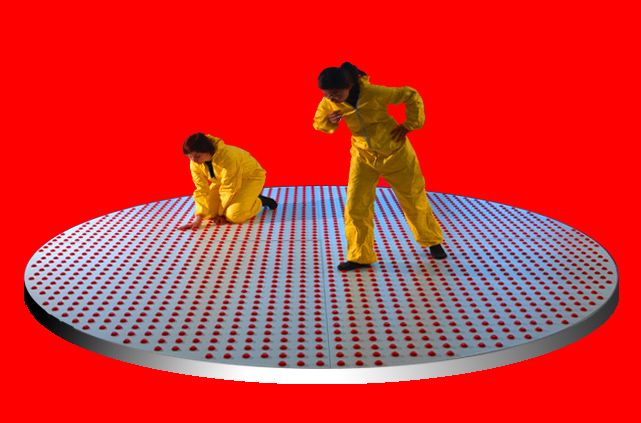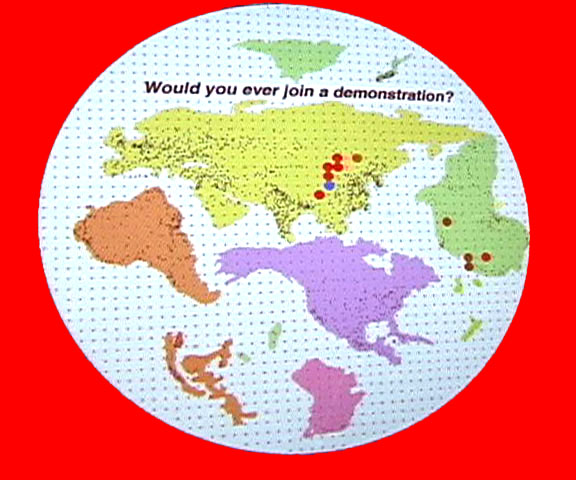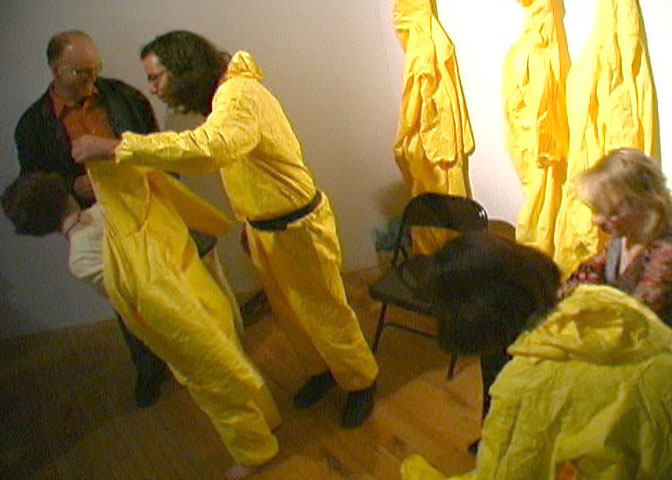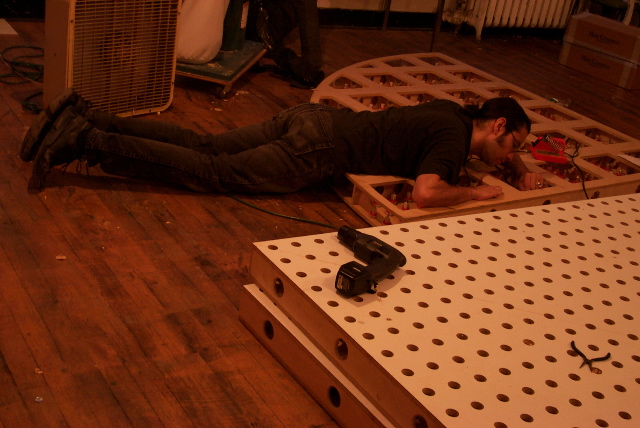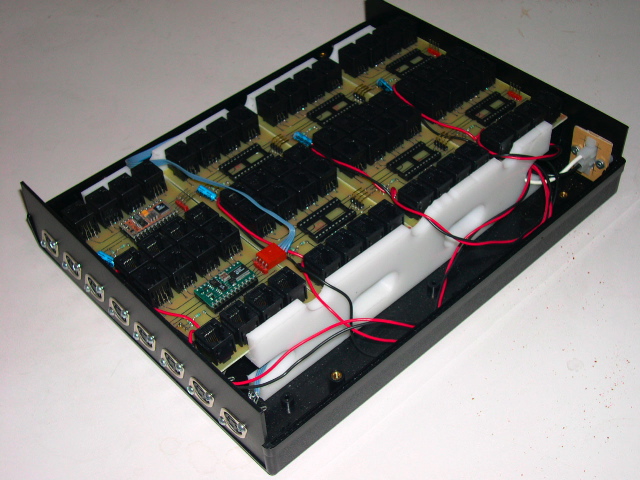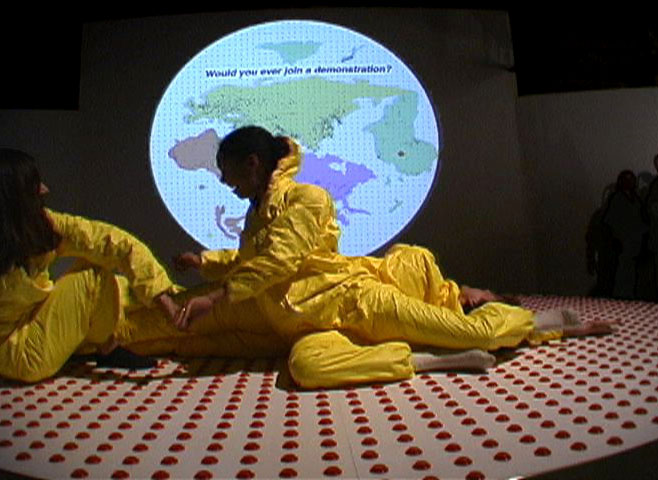
(figure 3) Active-Stimulation Feedback Platform at Big
Orbit Gallery, Buffalo, NY.
|
2000 volunteers living in (or recently emmigrated from) each of these
cities is recorded saying three simple words "Yes", "No" and "Maybe", in
their native language, and the individual files (3 from each person) are
stored as sound files in the computer and associated with the 2000 buttons.
Each button, when pushed plays either a "yes", "maybe", or a "no".
The computer biases each button (whether it
will say "yes", "maybe", "no") according to varied simulations. These
simulations are reminiscent of cold war war-game scenarios stemming from
military think-tanks, and more recent economic forecasting stemming from
economic think tanks. For instance, the recent invasion of Iraq could be
seen as biases of "yes" emanating from US cities, while most European buttons
would be biased for "no". Similarly, global justice movements could be
modeled. The simulation--extruded into real space on the ASFP--may eventually
be dynamic. That is, that depending on the regions of the globe that are
activated (by pressing their buttons), they could influence neighboring
regions. Currently, the frequency of a buttons activation controls
audio level at which the sample is played. Public opinion data was
obtained from the 2001 World
Values Survey. Questions include: "Would you ... attend a demonstration,"
"join a strike," etc. The project will eventually incorporate web-based
surveying as well (allowing on-line participators to vote "yes" or "no"
for their city--responses would be tallied/averaged.) |
